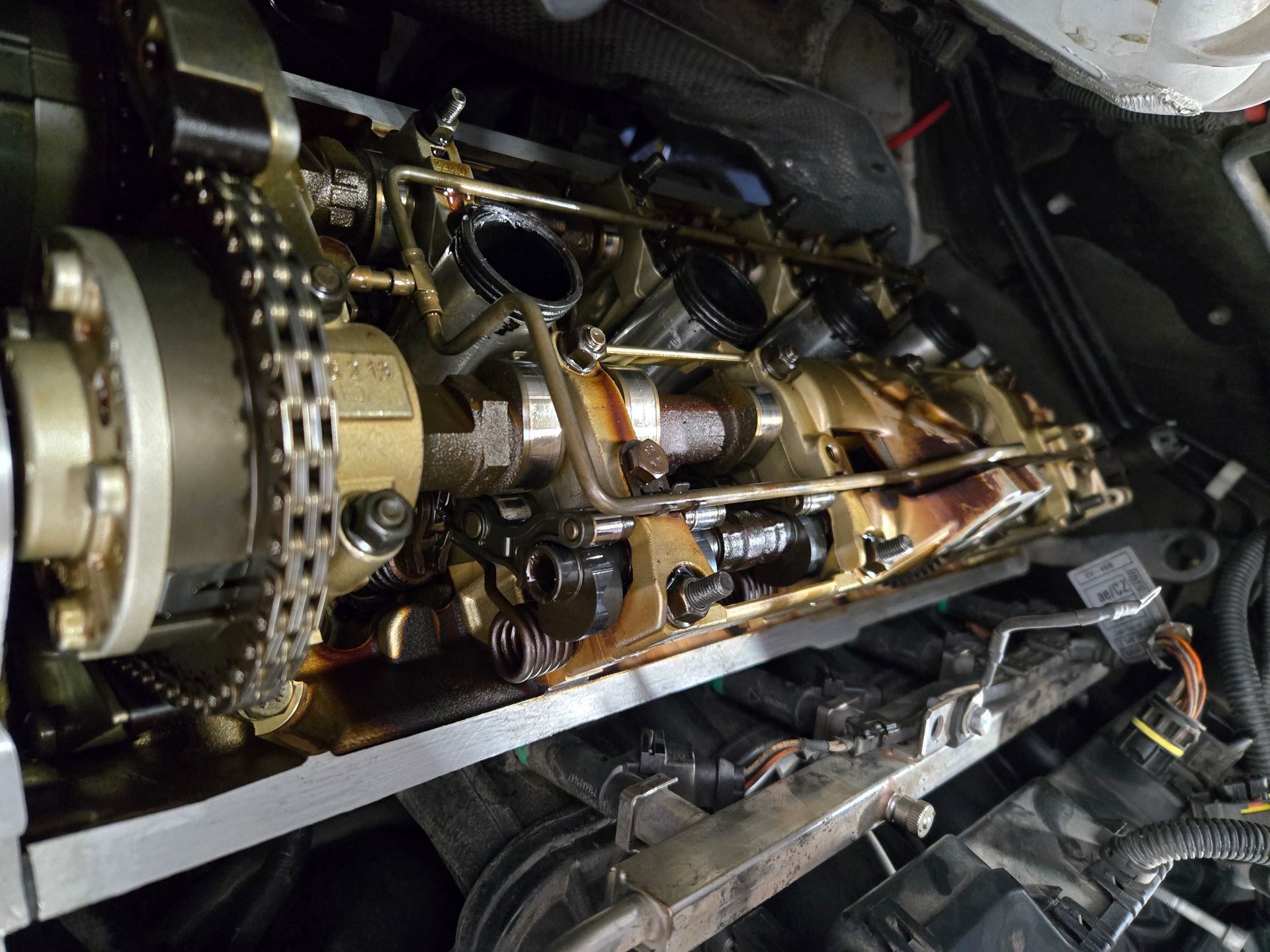2008 Land Rover LR2 HSE: Solving an AC That Just Wouldn’t Chill
Diagnosis by Peak Euro
When the sun’s out in Central Oregon, a working air conditioner isn’t a luxury, it’s a must. Recently, we had a 2008 Land Rover LR2 HSE roll into the shop with an AC that just couldn’t keep up. The owner explained that no matter how high they cranked the dial, the air never got cold.
This job landed in the capable hands of Joseph, our newest team member and Jaguar Land Rover specialist. He’s seen his fair share of tricky AC issues, so he dove right in.
First, Joseph verified the concern for himself, and sure enough, the AC was pushing out nothing but ambient air, hovering at 73°F. A quick fault scan showed no stored trouble codes related to the climate system, so the next logical step was to check the refrigerant level.
Hooking up the recovery machine revealed only 0.47 KGS of refrigerant, significantly under the LR2’s factory specification of 0.73 KGS. For an AC system to function properly, the refrigerant charge needs to be spot-on; too little, and the system can’t build enough pressure to activate the compressor clutch.
Next, Joseph performed a leak inspection. He found telltale signs of refrigerant oil around the Schrader valves (valve stems) and the suction line’s O-ring at the compressor. Clear evidence of slow leaks that can drain refrigerant over time.
Testing the extent of the damage:
With the leaks identified, Joseph replaced the failing Schrader valves and the suction line O-ring using higher-quality, OEM-equivalent parts. Once the leaks were sealed up, Joseph evacuated and recharged the system back to the proper 0.73 KGS. A recheck confirmed no immediate leaks and that system pressures were right where they should be. But the job wasn’t finished yet, the AC still refused to blow cold.
Continued Repair:
Time for more detective work. Joseph observed that when the AC switch was engaged, the compressor clutch didn’t click in to pressurize the refrigerant circuit. He measured the voltage at the clutch’s trigger wire: 13.34 volts, a healthy signal indicating that the vehicle’s electronics were doing their job.
To confirm, he bypassed the circuit using a specialized diagnostic tool to jump power directly to the clutch. Still no engagement, which confirmed the internal clutch mechanism had failed.
On this particular model, it’s not cost-effective or reliable to just replace the clutch alone. Replacing the entire compressor assembly is the best practice which ensures all moving parts are fresh and allows us to stand behind the repair with our 3-year/36,000-mile parts and labor warranty.
Once the new, higher-quality compressor was installed and the system recharged, Joseph ran a final test. Success! The AC quickly dropped cabin temperatures from ambient 73°F to a frosty 41.1°F, exactly what you want on a hot day.
The Takeaway
This Land Rover’s visit is a great reminder that the right diagnosis, proper parts, and quality workmanship save drivers from headaches and repeat failures down the road. Small leaks at valves and O-rings can gradually rob your AC of refrigerant, leading to bigger issues like an overworked or failed compressor clutch.
At Peak Euro, we believe in fixing it right the first time, using premium parts and certified expertise so you can drive away confident, comfortable, and covered by one of the best warranties around.












